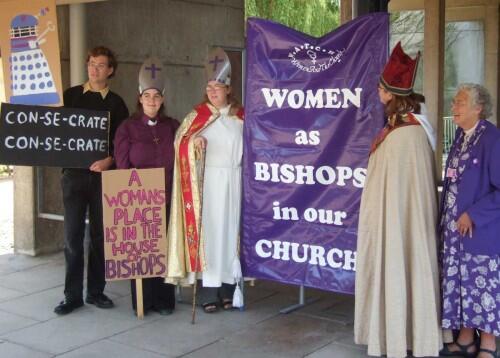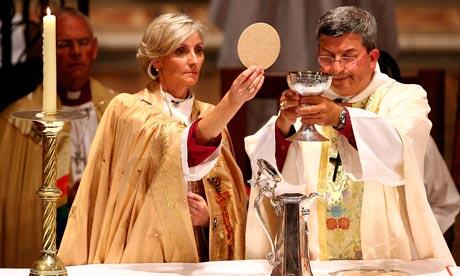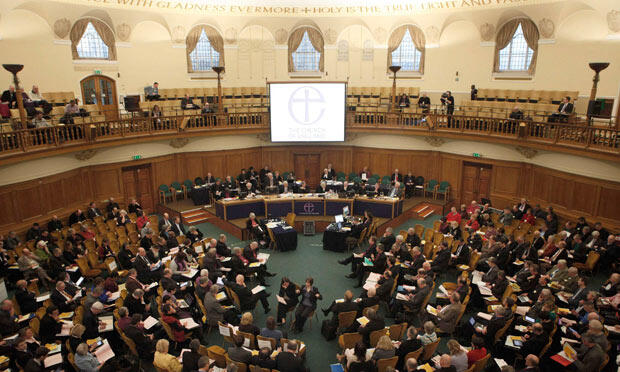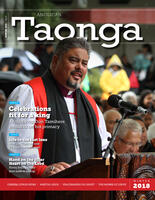


The archbishops of Canterbury and York have avoided humiliation in the Church of England General Synod by putting off a split over the ordination of women bishops.
The synod voted against measures that would have given traditionalists the legal right to ignore the leadership of women bishops. The proposal, by the Manchester diocesan synod, would have accepted that parishes opposed to female diocesan bishops could be ministered by male bishops.
But the synod also rejected an attempt by the Southwark diocese in London to ensure bishops press on with legislation to introduce women bishops.
In spite of four days of tortuous debate, the synod agreed that its bishops could instead tinker with legislation that would allow the ordination of women as bishops, before returning it to the synod for final approval in July.
If that legislation is passed, women bishops could be ordained in 2014.
It is still possible that either side could block the legislation this summer, setting back the process of ordaining women as bishops by at least five years.
The synod accepted a call from Dr Rowan Williams, the Archbishop of Canterbury, who asked the synod to "leave the door open" for some "bits of fine tuning".
The Archbishop of York, Dr John Sentamu, who supported the Manchester motion, called for the synod to hold together.
"The only way we can do this is by inviting the bishops to look at it. Whether it's do-able I don't know, but give us another chance to see whether we can do it."
A spokesman for the traditionalist group Forward in Faith told the Guardian: "It was a complete waste of time. But we're better off than we were.
"It is not as good as it could have been and it's not as bad as it could have been. It's up to the bishops now. They can sort this out, but do they have the balls to? If they don't, it won't get final approval."
Fears that the legislation could fall in July were also voiced by the Bishop of Gloucester, Michael Perham.
In a passionate speech, which aroused sustained applause, he said: "Bishops do not dissent lightly from the views of their archbishops. The draft legislation represents a huge sacrifice for supporters of women bishops.
"It is the middle way. The worst possible outcome would be for the legislation to go down at final approval in July. There would be a haemorrhaging of women from the church."
At the heart of the debate is whether there should be any accommodation in law for people opposed to women bishops.
The church decided five years ago that there was no legal obstacle for women becoming bishops.
Traditionalists – Anglo-Catholics and conservative evangelicals – have repeatedly asked for access to male leadership to be incorporated into legislation. Supporters of women bishops argued that such a move would create a two-tier system.
What the synod agreed to appears to have appeased both sides and brought a rare moment of unity.
Synod member Christina Rees said she was delighted by the outcome because it avoided the "legalisation of discrimination".
But a spokeswoman for the campaign group Women and the Church was more circumspect. Sally Barnes said: "It still leaves wiggle room for the bishops to get something in that would be discriminatory."
When asked if she thought the vote was a snub to the archbishops she replied: "It is synod saying be careful, we're not going to accept what you say."
However narrow the victory – there was hefty resistance from the clergy and laity – the archbishops cannot guarantee the legislation will get the votes it needs this summer in order to be sent to parliament.
Long journey
Matthew Davies writes:
The long path towards accepting women’s ordained ministry in the Anglican Communion began in 1920 when the Lambeth Conference called (via Resolutions 47-52) for the diaconate of women to be restored "formally and canonically," adding that it should be recognized throughout the Communion.
The first woman priest in the Communion, Li Tim-Oi, was ordained in Hong Kong in 1944. Due to outside pressure she resigned her licence, but not her holy orders, following World War II.
In 1971, the Rev. Jane Hwang and the Rev. Joyce Bennett were ordained priests in the Diocese of Hong Kong, though their ministries were not recognized in many parts of the Anglican Communion.
In 1974, there was an "irregular" ordination of 11 women in the U.S.-based Episcopal Church, which officially authorized women's priestly ordination two years later.
Bishop Barbara Harris, now retired suffragan of Massachusetts, was elected in 1988 and became the Anglican Communion's first woman bishop after her consecration and ordination in 1989.
The Rt. Rev. Penelope Jamieson made history in 1989 when she was elected as bishop of the Diocese of Dunedin, New Zealand, and became the first woman to serve as a diocesan bishop in the Anglican Communion.
The Rt. Rev. Mary Adelia McLeod, who was ordained a priest in 1980, was consecrated in 1993 as bishop of the Diocese of Vermont, becoming the first woman diocesan bishop in the U.S.-based Episcopal Church. She retired in 2001.
The Rt. Rev. Canon Nerva Cot Aguilera became the first woman Anglican bishop in Latin America when she was consecrated bishop suffragan of the Episcopal Church of Cuba in June 2007.
The Church of England opened the priesthood to women in November 1992, five years after women were first ordained to the diaconate. More than 5000 women have been ordained as priests in England since 1994 and today they represent nearly 40 percent of all clergy.
The General Synod is the national assembly of the Church of England which came into being in 1970 replacing an earlier body known as the Church Assembly. It continues a tradition of synodical government which, in England, has its origins in the medieval period.





Comments
Log in or create a user account to comment.